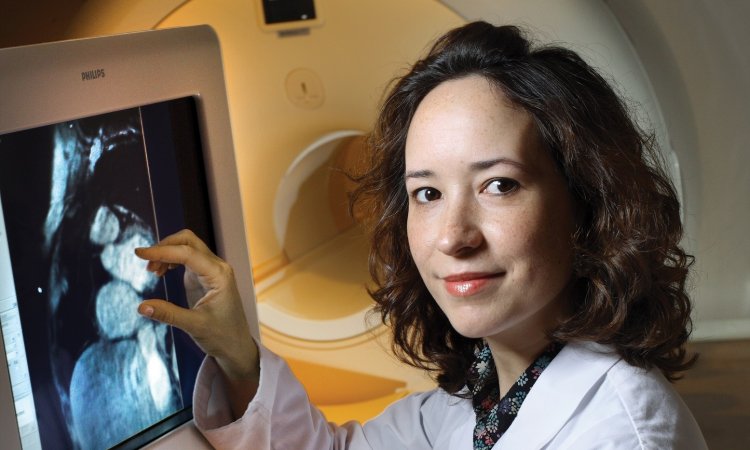Paediatric imaging
MRI in paediatric cardiology
'In paediatric cardiology, echocardiography is the method of choice for preoperative diagnostic purposes,' explains Professor Dr Emanuela Valsangiacomo-Büchel, senior cardiologist and director of cardiovascular imaging at the University Children’s Hospital Zurich, Switzerland.
Report: Axel Viola

Although we are quite aware that echocardiography does not show everything,’ she adds. ‘Therefore we used to perform cardiac catheterisation. Today we prefer magnetic resonance imaging.’
Magnetic resonance imaging (MRI) has the major advantage of being a non-invasive procedure that does not involve radiation exposure, which makes the modality particularly well suited for the diagnosis of complex congenital heart defects in, such as complex anomalies of the aortic arch or pulmonary arteries. ‘A prime example where MRI replaces cardiac catheterisation is pulmonary atresia with multicentric lung perfusion, Dr Valsangiacomo-Büchel explains. Non-invasive procedures avoid thrombosis in peripheral vessels.
‘Today, the treatment of children with congenital heart defects often involves cardiac catheters and open rather than occluded vessels make things much easier for both surgeon and patient,’ the cardiovascular imaging specialist points out. At Zurich’s University Children’s Hospital quite a number of neonates with complex heart defects undergo an MRI scan rather than catheterisation.
Dr Valsangiacomo-Büchel’s institution is, however, the exception rather than the rule, because cardiac MRI requires a mature and sophisticated interdisciplinary infrastructure. Anaesthesia and ICU teams, for example, must be accustomed to working in an MRI environment. This is the case at the University Children’s Hospital, where the paediatric cardiology department is involved as well as radiology, anaesthesia and the ICU. Other facilities also offer MRI but tend to focus on older children.
MRI in children with congenital heart diseases is most frequently indicated postoperatively when ‘certain residual findings’ are present after surgery. MRI provides functional and morphological information – a crucial feature, since both types of information need to be considered in the evaluation of peripheral pulmonary atresia.
Images and data of differential lung perfusion allow a precise evaluation of the patient situation. ‘We no longer perform lung scintigraphy,’ the expert says. Typical indications for postoperative MRI are tetralogy of Fallot after total repair with pulmonary valve insufficiency in follow-up: measurement of size and function of the right ventricle, quantification of pulmonary insufficiency and finally the decision whether a pulmonary valve replacement is required.
Ultrasound continues to be the preferred method to document the success of a paediatric cardiac intervention. If the ultrasound exam does not yield any suspicious findings, no MRI is necessary. If however residual findings are present which might require another intervention, MRI can be useful both for diagnostic and planning purposes.
An MRI scan for example facilitates the decision whether catheterisation or surgery is indicated. ‘MRI is currently the diagnostic standard to plan a transcutaneous pulmonary valve replacement,’ Dr Valsangiacomo-Büchel explains. The modality measures all necessary parameters in the right ventricular outflow tract and generates a 3-D image. Based on these data the cardiologists decide whether a transcutaneous valve replacement is possible or whether surgery is required.
MRI can visualise the coronary arteries and their anomalies – an important issue Dr Valsangiacomo-Büchel believes: ‘If a coronary artery runs across the right ventricular outflow tract, a Melody valve implant is contra-indicated.’
PROFILE
Professor Emanuela Valsangiacomo-Büchel directs cardiovascular imaging in the paediatric cardiology department at Zurich’s University Children’s Hospital, Switzerland, where she also heads the foetal cardiology programme. Her paediatric cardiology training was taken mainly at her current institution. However, during her stay at the Hospital for Sick Children in Toronto/Canada and the Children’s Hospital in Boston, USA, between 2000-2002, she focused on cardiovascular imaging.
03.12.2014











